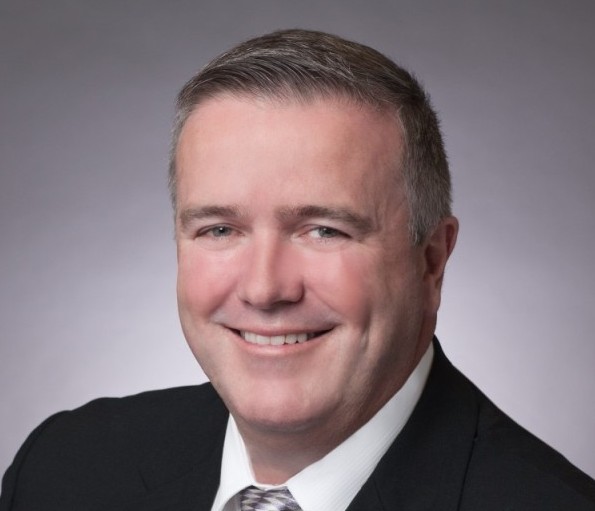Getting Products to Market
Research and development (R&D) in the fire sprinkler world is a fascinating, frustrating, regulated, fun, rewarding, and slow process. In the fire sprinkler industry we often confuse R&D with good, old-fashioned product engineering.
I have had the pleasure to be involved with the R&D process for the past 26 years in this amazing industry. Over the years, I have noticed a pattern to some of the best “idea-to-product” developments and will try to simplify my observations with one qualification; this is my opinion and many will have different opinions. First, before we discuss the cycle, there are a couple of rules for successful R&D.
First Rule: If you read it in a book, it’s most likely history – move on.
I spent the first 10 years of my career memorizing and teaching NFPA 13, Standard for the Installation of Sprinkler Systems. I spent the next 25 years challenging what I had read, learning that my design and installation bible was just the current standard based on the existing tools and limited research budgets, which resulted in many assumptions. You may not have wanted to challenge me in my earlier years on the accuracy of NFPA 13. I would have defended it to no end, since I was taught that the information came from the high mountain (delivered by Chet Schirmer and Rolf Jensen – both of whom were friends and mentors of mine). I am still a huge advocate of the NFPA standards, especially since most pertinent standards contain the “new technology” language:
“NFPA 13 2016 Edition 1.5 Equivalency. Nothing in this standard is intended to prevent the use of systems, methods, or devices of equivalent or superior quality, strength, fire resistance, effectiveness, durability, and safety over those prescribed by this standard.
“1.5.1 Technical documentation shall be submitted to the authority having jurisdiction to demonstrate equivalency.”
Second Rule: Better fire protection does not sell itself; economical alternatives do.
Okay, take a deep breath and when you are done being mad about this comment and begin listing the five new things you consider better fire protection (because I know you will), stop and think of why those technologies were developed. Every one of them will start with the cycle of “problem.” For example, everybody’s dislike of in-rack sprinklers led to the development of early suppression fast response (ESFR) for rack storage. We are taught that the fancy acronym ES “early suppression” denotes something very special. Ask any insurance carrier if they would rather wait for the fire to reach the ceiling or have an in-rack sprinkler extinguish the fire at the 10-ft level of rack storage. What is better fire protection? In-rack sprinklers, so what’s the problem? Nobody likes to have in-racks, so ESFRs solve a problem. They eliminate the in-rack sprinklers, but do not necessarily provide better fire protection.
There are more rules, but most who know me hear these stories in my favorite R&D think tank, otherwise known as “The Bar.” Let’s move on to the cycle:
The Cycle = Problem > Need > Research > Negotiation > Solution/Testing > IP > Standards > Move the Market
Problem – There are many of them out there, and the skill of listening is the fastest way to identify problems that present opportunity. An example would be attic sprinklers. The problem was identified by BF Goodrich, now Lubrizol, while attempting to expand the use of CPVC in attic areas. Many attempts were made at using standard spray sprinklers in combustible sloped ceiling construction to protect not only the attic area during a fire, but also cool the piping to prevent rupture. Standard spray sprinklers continued to fail at both criteria. This was confusing since the standards were written to say that these sprinklers would control such a fire. They identified the problem and the remaining steps of developing were as outlined in this cycle.
Need – Is there a need to solve the problem? This is a critical decision point since little to no money has changed hands yet. One of my best arguments for “need” is challenging the team to respond to the following question: “If someone else solves the problem, what would we do?” This is a business decision and gives the green light to move forward. For Combustible Concealed Sprinklers (COIN®) the need was the expanded use of CPVC in interstitial spaces, without having to transition to steel when sprinklers were required in the area. The lower the installed cost, the more attractive sprinklers remained as a tool for the multi-family housing people. This is a need. Some innovations fall well short of market acceptance, such as the “Limited Water Supply Sprinkler” initiative that skipped solving the real needs and failed on market acceptance, since the market saw no need for it.
Research – At this point, a clear understanding of the remaining cycle steps is necessary. Sprinkler research is still much of a black art. There are claims of abilities to model sprinkler performance and the programs are much better today than even five years ago. As long as we are still in a deteriorating water supply environment, spray patterns, droplet size, pre-wetting and air movement all change during a fire event, making it difficult to model. So for now, good, old-fashioned testing is still necessary on most developments. For many reasons – longer than this article can cover – the generally accepted performance of a new technology has to exceed the level of performance of the prescribed standards and must protect the intended application. This can be difficult and frustrating when some of the prescribed standards are lacking complete protection and you learn that they were grandfathered into the application because there was nothing else available at the time, or it was the best they could do. Today you have to solve the complete application. We learned this the hard way with the development of extended coverage ordinary hazard (ECOH) sprinklers. We learned that we had to maintain fire control when storage was piled to 18-in. clearance below the sprinkler. We tested standard spray sprinklers and they failed miserably. I thought failing miserably was the minimum standard! No – we had to demonstrate fire control since new technologies do not get grandfathered. There may be 100 ways to solve the problem, but only one or two that will be accepted by the market. Find people with your passion and argue early.
Negotiation – Always know and communicate your definition of success for a program before you demonstrate it. It is easier to complete a goal with data than to let the data provide the result. This takes plenty of negotiation within the team and outside agencies to stay focused on the goal. However, learn to be flexible if necessary or accept failure early. It builds character.
Solution/Testing – Validation and test data is simply required. Most testing agencies will test what you want, they will provide you with data, and they will provide you with a bill for that data – but there is no guarantee of an Approval or Listing if the data doesn’t support the application. The data you gather may also be peer reviewed if you submit for standardization of your technology. I have witnessed many frustrated entrepreneurs whose data was rejected for standardization. It is not the laboratory’s job to know what data is required; it is the entrepreneur’s job to know the goal (the entire cycle).
Intellectual Property – What can I say here? It’s a business. Not for the average inventor, but a necessary step. I was once told – “Anybody can get a patent, only a few can defend it.” Just because you have a patent, doesn’t stop someone else from making it. You have to defend your patent in court to actually enforce it. It’s expensive and time consuming, but necessary if you’re investing millions of dollars and don’t want people following you for just thousands. Some believe being second is always cheaper and there is always room for improvement – they just will not be known as innovators.
Standards – True “outside-the-box” research normally requires some modification to the standards. Although many standards allow new technologies and alternative methods, many people like to see the technology referenced in the body of the standard. The time to identify the standard’s strategy is back on the “need” step; the remaining steps after that should support a clean standards revision process. Also respect the standards revision cycle – if your data misses a cycle, you may have to wait three more years for the next one, and then possibly six more years before the building and fire code adoption for that particular edition of the standard.
Move the Market – The hardest step, and one of the most frustrating, is to wait for the market to accept your product. If you know our market, you understand the lead time from product awareness to bid, contract, design, build, and install. This process can take another year off your life. The best way to move a market is through education, teaching the benefits, and being active in the process of this industry. A great idea/product usually takes five years for market acceptance. That doesn’t mean that nobody uses it in the interim; innovative customers pay attention to those who do (or better yet, have a drink with them) and as a result lead in their field.
Conclusion
Thank you for spending your time reading this. I hope it’s helped you gain a better understanding of the R&D process in our fire sprinkler world. Great companies are investing millions of dollars to continue our industry’s growth here and around the world. Lastly, remember rule #1 – if you are reading this, it’s history and we’ve moved on to the next thing.
 ABOUT THE AUTHOR: James E. Golinveaux is a former senior fellow of water suppression products for Tyco Fire Suppression & Building Products. With 34 years of experience in the fire protection industry including both contracting and manufacturing, Golinveaux is currently the president/CEO of Viking Group, Inc. He currently holds 12 U.S. patent families in automatic sprinkler technologies. He is a past member or the Board of Trustees for the Fire Protection Research Foundation, as well as multiple other boards and councils including AFSA, Factory Mutual Advisory, International Fire Sprinkler Association, NFSA, and the Fire Sprinkler Association of Brazil. Golinveaux is also a subject matter expert for past two editions of the NFPA Fire Protection Handbook and the NFPA 13 Handbook on Storage and Residential Sprinklers. In addition to serving on multiple NFPA technical committees, he is a current member of the NFPA Standards Council.
ABOUT THE AUTHOR: James E. Golinveaux is a former senior fellow of water suppression products for Tyco Fire Suppression & Building Products. With 34 years of experience in the fire protection industry including both contracting and manufacturing, Golinveaux is currently the president/CEO of Viking Group, Inc. He currently holds 12 U.S. patent families in automatic sprinkler technologies. He is a past member or the Board of Trustees for the Fire Protection Research Foundation, as well as multiple other boards and councils including AFSA, Factory Mutual Advisory, International Fire Sprinkler Association, NFSA, and the Fire Sprinkler Association of Brazil. Golinveaux is also a subject matter expert for past two editions of the NFPA Fire Protection Handbook and the NFPA 13 Handbook on Storage and Residential Sprinklers. In addition to serving on multiple NFPA technical committees, he is a current member of the NFPA Standards Council.
 Sprinkler Age A Publication of the American Fire Sprinkler Association
Sprinkler Age A Publication of the American Fire Sprinkler Association

